Trek’s fourth-generation Domane SLR 7 P1 brings much lower weight and a more aerodynamic design to the frame and fork compared to the previous Domane SLR 6.
While previous generations have focused the design on smoothing rough terrain, this fourth iteration brings the bike very much back to the world of racing.
IsoSpeed has gone from the front end, and the system at the rear has been redesigned – simplified and above all lightened. This is combined with a wheel and tyre package that now does the heavy lifting when it comes to comfort.
The Trek Domane SLR 7 P1 has a sprightly feel that makes it a formidable companion if your idea of a good ride is dawn-til-dusk mileage interspersed with fast, exciting sections and steady social recovery miles.
Trek Domane SLR 7 P1 updates
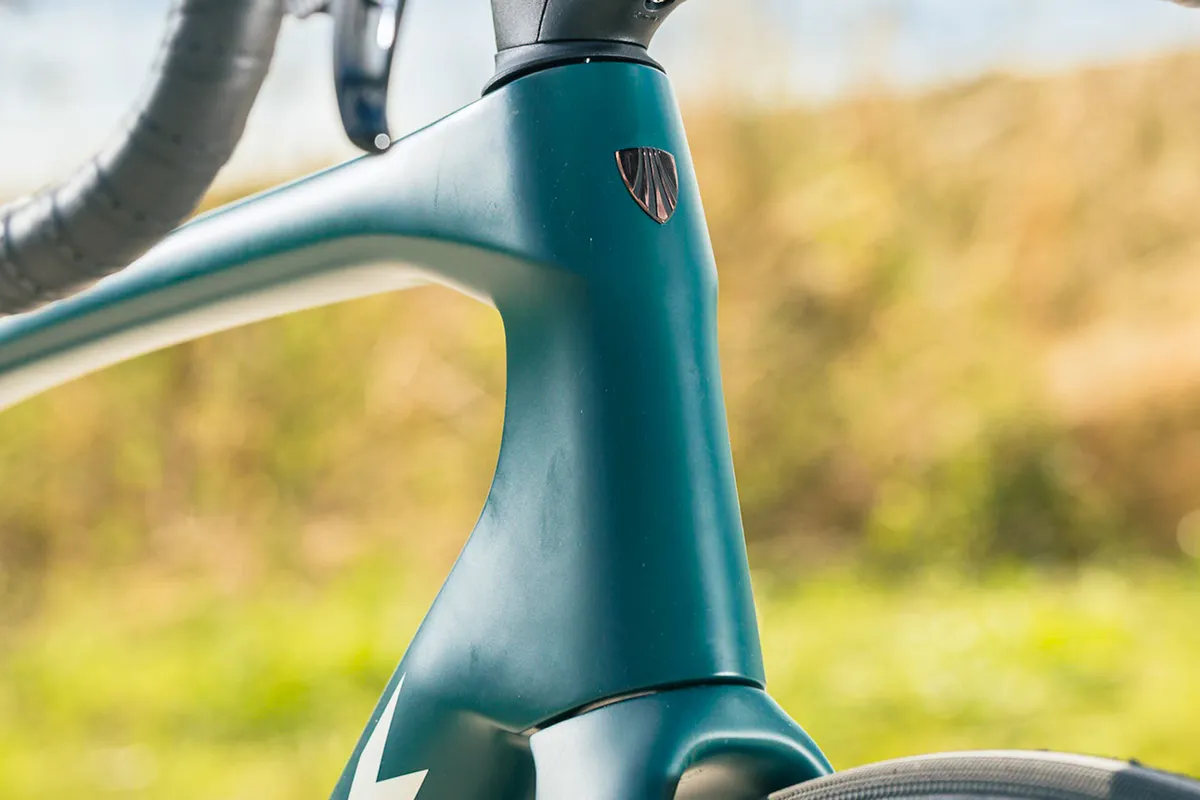
Trek has removed the front IsoSpeed system for the fourth-generation bike. The weight is reduced and the design is simplified.
This has resulted in a bike that looks leaner and cleaner.
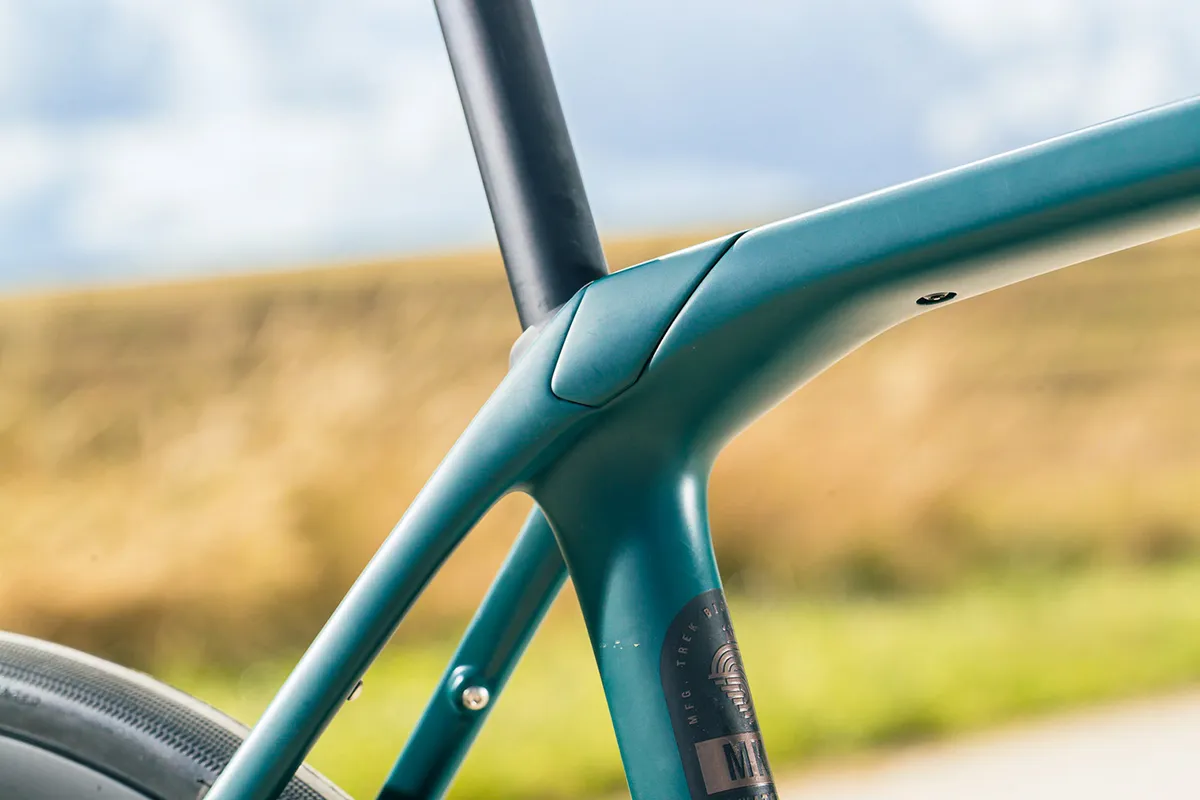
At the rear, the IsoSpeed system has also seen a massive change. The original system created a separation between the seat tube, top tube and seatstays.
The new IsoSpeed design suspends the clamp system for the carbon seatpost, making it independent of the frame.
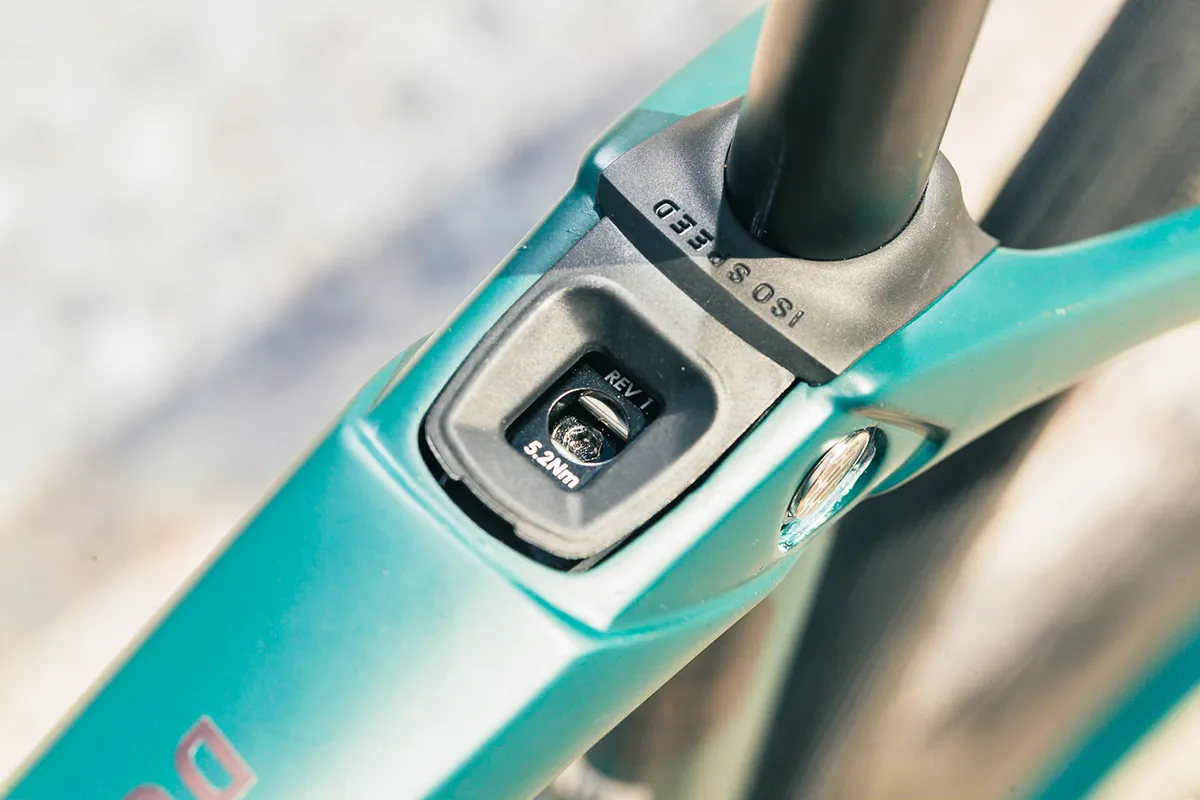
The advantage of this over a flexible or suspended seatpost is a saving in weight and improvement in stiffness. The compliance is built into a controlled clamp system that allows the post to move fore and aft a little, while still maintaining a consistent saddle height.
A brief history of IsoSpeed
The original Domane was a bike built back in 2012 to take on the spring cobbled classics. It was developed with plenty of input from classics legend Fabián Cancellara.
It also debuted the IsoSpeed system, which on the original consisted of a decoupler that separated the top tube and seatstays from the seat tube.
The bushed pivot of the decoupler enabled the seat tube to flex and move independently.
In 2016, Trek added a front IsoSpeed system, which again decoupled the steerer tube from the head tube, allowing more fore-and-aft free movement. This reduced the vibrations at the front end.
The third-generation Domane brought aerodynamic shapes to the frameset and added more tyre clearance too, upping the space available to take a 38mm-wide tyre.
This new Domane comes supplied with 32mm Bontrager R3 tyres, which are set up tubeless.
They are wrapped around Bontrager’s latest version of the Aeolus Pro 37 wheelset. With a broad 21mm internal width, it plumps up the tyres to 34mm wide.

A tubeless setup enables you to run lower pressures than you would with a traditional clincher and inner tubes because you don’t have concerns over pinch punctures. This makes the bike run smoother on rough terrain.
Effectively, the type of suspension a bike such as the Domane needs can be provided by wide road bike tyres rather than heavy, complex pseudo-suspension systems, no matter how good they are.
The new Domane comes in three flavours: the base model SL, this SLR and an exclusive RSL version.
The RSL frameset (frame/fork/headset/post) weighs in at a claimed 1,600g for a size 56cm.
Trek claims the RSL saves 100g over the SLR by omitting the down tube storage, so expect the SLR frameset to weigh in at around a claimed 1,700g for a 56cm.
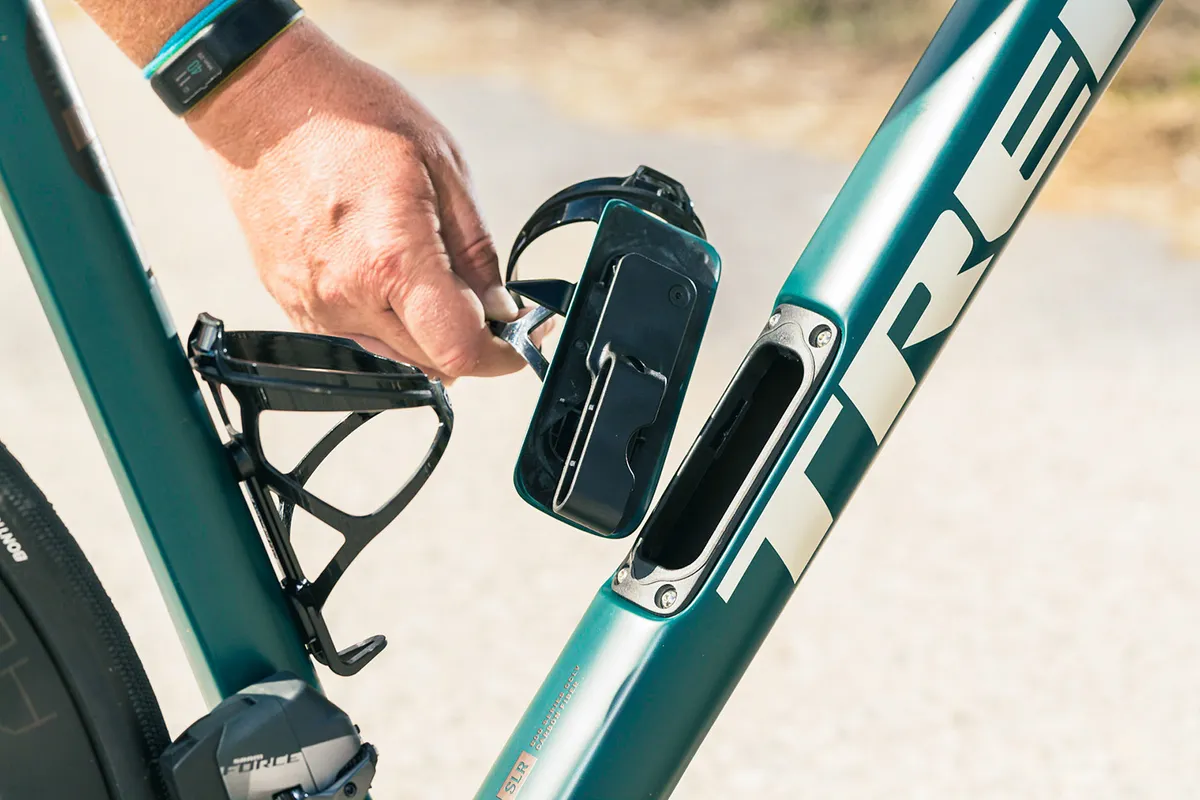
On the RSL, Trek forgoes the down tube storage box to save a few grams and also reduces the tyre clearance to 35mm.
The RSL also adopts the race-orientated H1.5 geometry from the Trek Madone and Emonda.
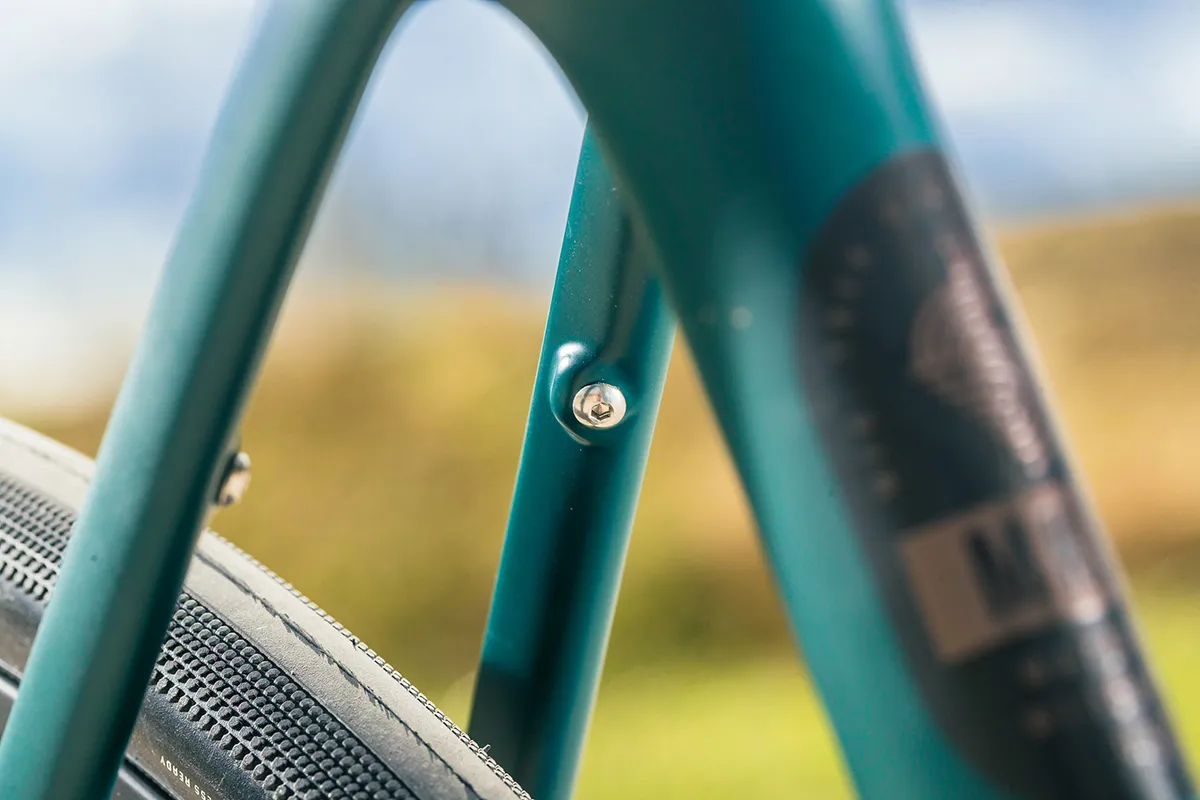
Even with the chassis being a whole heap lighter, it hits all the right notes for year-round versatility. It has full front and rear mudguard mounts, and is even compatible with a rear pannier rack.
Multiple bottle mounts, plus a set of bento box mounts on the top tube, open the Domane's use case up as a commuting bike, a winter training bike and even for bikepacking or touring.
Trek Domane SLR 7 P1 spec details
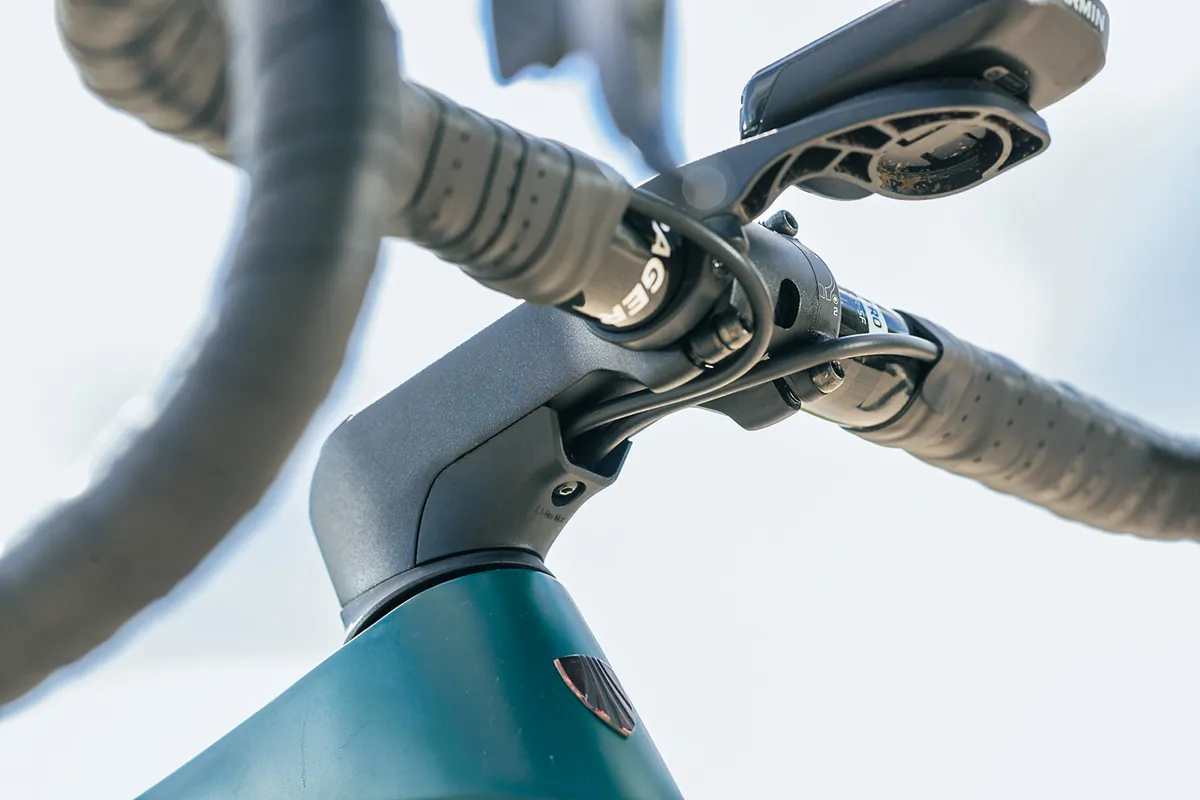
As you’d imagine for a Trek, the majority of the equipment comes from the brand's in-house components brand, Bontrager.
Up-front, a very tidy stem routes the brake hoses through a channel on its underside and down into the head tube (sitting in front of the steerer).
Bontrager’s carbon IsoCore bar has a traditional height drop that, when combined with the endurance geometry of the SLR, makes for a bike that’s comfortable to ride down in the drops for extended miles.
The IsoCore bar also works in tandem with the bar tape and its gel inserts to counter buzzy vibrations from poor road surfaces.
In fact, the combination of the bar and the wide tubeless tyres meant I didn’t miss front IsoSpeed, which was one of my favourite details on the third-generation Domane.
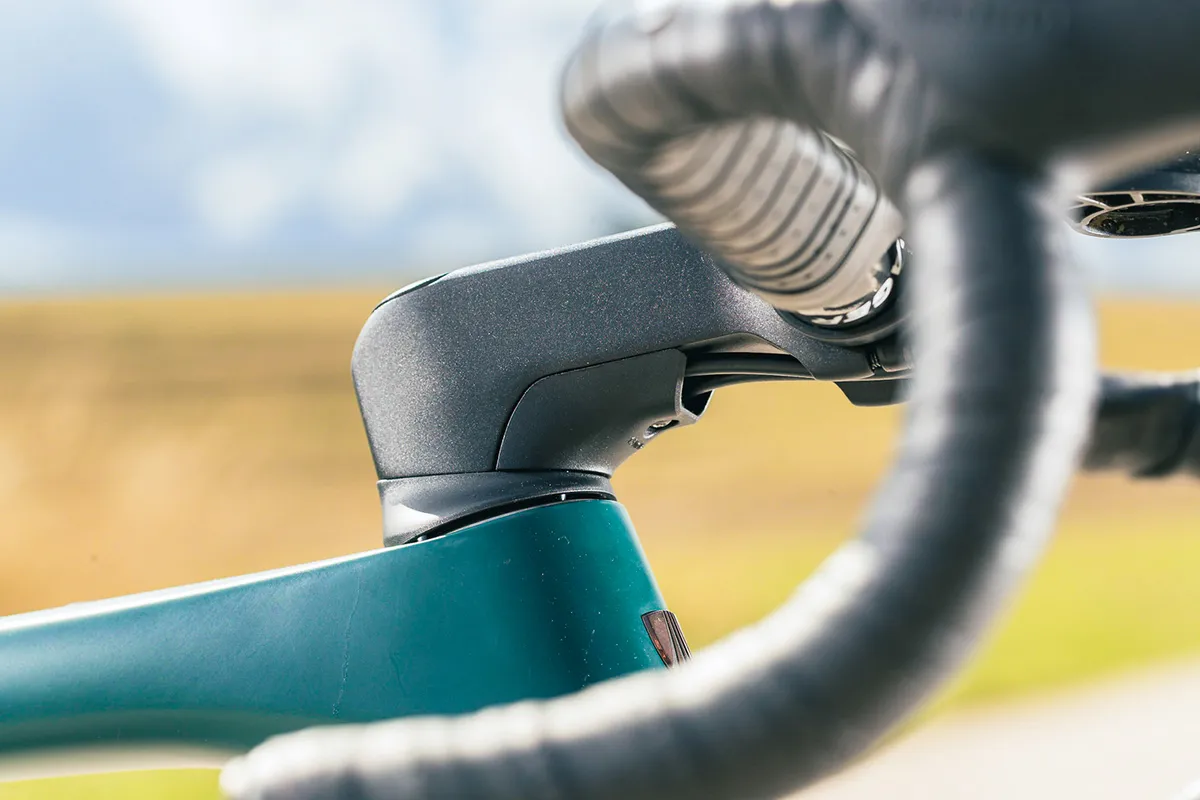
The new Bontrager short-nose saddle also impressed me. This combines a deep channel, firm yet forgiving padding and a shape that favours on-the-rivet power pedalling without causing discomfort.
The R3 tyres certainly don’t feel as rapid when it comes to acceleration compared to my current favourite Continental GP5000s. In that respect, I would have preferred Bontrager’s own range-topping R4 tyres if Trek wanted to keep things in-house
I do, however, have plenty of time for the R3’s semi-treaded texture. In what has been one of the driest summers leading into a dry autumn in the UK, these tyres have offered impressive grip on fast tarmac descents and hard-packed light gravel roads.
Throughout testing the Domane SLR 7 over weeks of big rides on all surfaces, the R3s held up to plenty of abuse without dropping pressure. I also had no punctures, and I think many will be happy to trade off a bit of rolling resistance in favour of the reliability they seem to offer.

The rest of the spec of the SLR 7 warrants no complaints, with the bike built around a SRAM Force eTAP AXS groupset.
The groupset provides slick, swift and accurate shifting. Whether going flat-out on rolling terrain or pushing the limits by dropping a cog on the steepest of climbs, the shifts remained unflustered.
Because of the rear derailleur’s chain-bounce eliminating clutch, I’ve been more than happy to divert my path away from tarmac and onto rougher roads and light gravel.
That said, although you get a dual-sided power meter, you are paying a whopping £9,500 for a bike with a second-tier groupset. SRAM Force eTap may be good, but that still stings.
Trek Domane SLR 7 P1 ride impressions
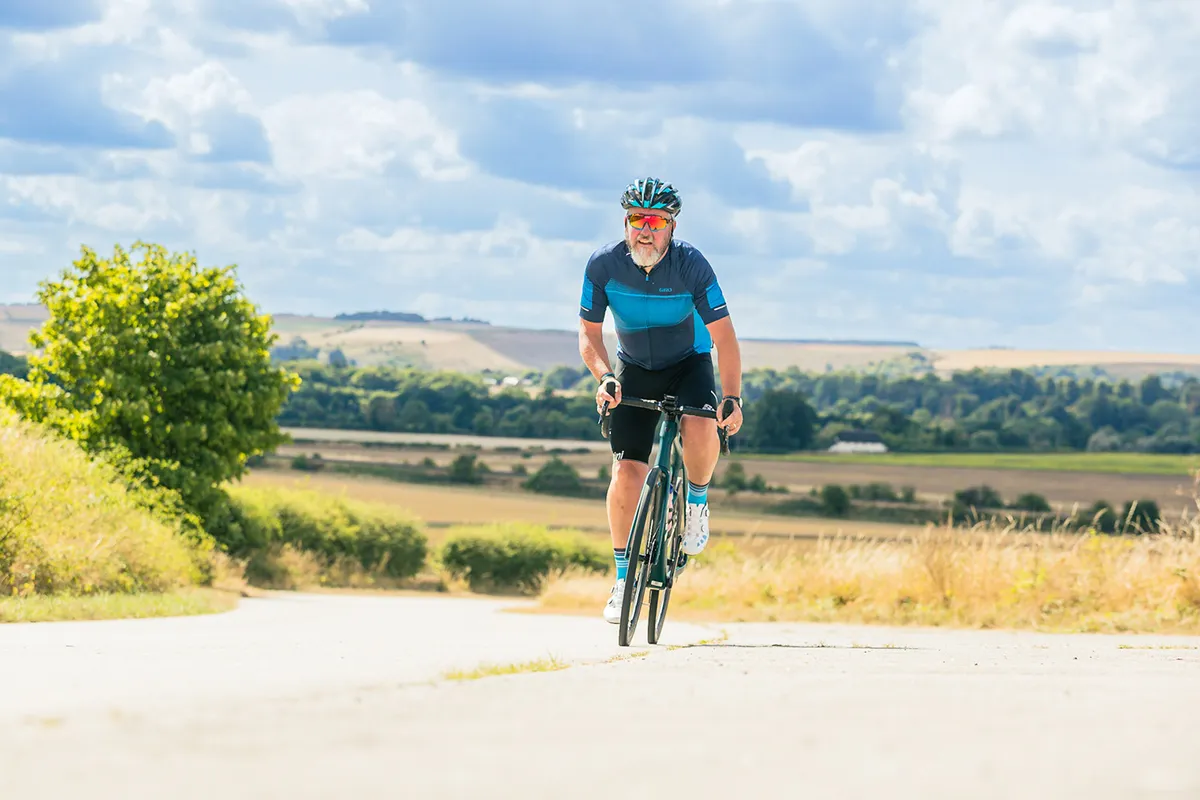
The ride position of the new Domane isn’t the most aggressive of endurance shapes. My 58cm test bike had a mid-height 611mm stack and short 380mm reach.
That does, however, mean it’s more comfortable to spend longer down in the drops of the excellent IsoCore carbon bar.

The Domane’s 1,022mm wheelbase is shorter than most for a bike of this type, however, and it balances up the ride position with a steering response that's both quick and balanced.
The Domane has always been a firm favourite of mine when it comes to descending, and the new fourth generation remains in my favour.
The compliance in the frame and fork helps the SLR track true even when the road surface is rough, broken and uneven.
It also has the ability to fill you with confidence to truly attack corners, providing ample grip and a steady cushioning from the combination of the frameset, stiff broad wheels and generously sized tyres.
The front end feels solid when you rise up on the pedals to sprint or attack a climb, working in unison with the bar and stem to provide no undue flexing.
The 46/33 and 10-36t gearing combination is comparable with a Shimano 50/34 with an 11-32t cassette, but features both a larger and a smaller gear at each extreme.
In short, it’s pretty much spot on for an endurance bike.
SRAM smartly keeps the core of the 10-36t cassette compact, so the gear progression feels smooth, only increasing in jumps when you're getting towards the biggest 36t sprocket.
The Force hydraulics combine well with the Paceline rotors, offering great braking with bags of feel.
The levers offer both reach adjustment and pad contact point adjustment, which makes it easy with a little experimentation to get the braking feeling just as you want it.
Trek Domane SLR 7 P1 bottom line

In short, the new Domane is something approaching the perfect sportive or Gran Fondo companion. It’s also more than versatile enough to take on mixed-surface rides.
The ride is simply sublime. Its balance between smooth, vibration-eliminating comfort, sharp handling, and out-and-out speed combines with an ability to get off the beaten track.
It’s as fast as some of the best road bikes and as capable as an all-road bike. As much as it pains me to admit it, the Domane could be close to the Holy Grail of one-bike-for-all.
It comes at a high price compared to its rivals: Specialized’s Force AXS equipped Roubaix Pro is £1,100 less, Cannondale’s Dura-Ace Di2-equipped Synapse is £400 cheaper, and Giant’s range-topping Defy Advanced Pro 0 – equipped with SRAM Red AXS – a huge £2,000 saving.
Even so, I’m happy to report the Domane SLR 7 is one of the very best bikes I’ve tried throughout 2022.
Product
| Brand | Trek |
| Price | A$13200.00, £9500.00, $9700.00 |
| Weight | 8.28kg |
Features
| Fork | Domane SLR carbon |
| Stem | Bontrager RCS Pro 7 degree |
| Chain | Sram Force |
| Frame | 800 Series OCLV Carbon |
| Tyres | Bontrager R3 Hard-Case lite, tubeless ready 32mm |
| Brakes | Sram Force, with Sram Paceline centrelock rotors |
| Cranks | Sram Force AXS 46/33 Power meter DUB |
| Saddle | Bontrager P3 Comp, Short nose |
| Wheels | Bontrager Aeolus Pro 37 |
| Shifter | Sram Force AXS eTap 12 speed |
| Cassette | Sram XG-1270, 10-36 12 speed |
| Seatpost | Domane carbon seatpost 20mm offset |
| Handlebar | Bontrager Elite Pro IsoCore VR-SF carbon |
| Bottom bracket | Sram Force T47 DUB |
| Rear derailleur | Sram Force AXS 36t max cog |
| Front derailleur | Sram Force AXS braze on |
| Features | Accessories: Internal Storage bag |
